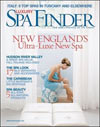Dear readers,
Mikao Usui, of course, founded the practice now known around the world as Reiki back in the 1920s. Hawayo Takata, the Japanese-American woman who brought Reiki from Japan to the rest of the world, never met Usui, but studied with one of his students, Chujiro Hayashi. Over the years many Reiki students were taught that Usui was, among other things, a medical doctor, a university president, and a Christian. In recent decades, researchers have found that he was neither a doctor nor a university president, and he was Buddhist (although there is disagreement on what sect and whether he was a layman, or lay monk). Usui's memorial stone, erected by some of his students a year after his death in 1927, mentions that he had studied books from several religious traditions (including Christian scriptures, according to one translation). But some contemporary Reiki teachers claim that it was not possible for Usui to have known anything about Christianity, since it was officially outlawed in Japan for 284 years, from 1587 until 1871. But unofficially, Christianity -- sometimes disguised as or melded with Buddhism, Shinto, and Shugendo -- continued to be practiced in secret until it was safe for Christians, or as they were called in Japanese, Kirishitans, to reveal themselves once more. It turns out that the "revelation of believers" was a key event in Japanese history, and it happened long before the official ban was lifted: in April, 1865, just months before Usui was born.
For decades, Reiki students were told that the founder of our practice, Mikao Usui, was a Christian. Later, we discovered he was a Buddhist. But is it possible that he was both? Could he have been a secret Christian (
Kakure Kirishitan), or at least familiar with Christian teachings? If that were the case, then the Catholic Church may have denounced one of its own when the U.S. Conference of Catholic Bishops condemned Reiki earlier this year. While we can never know for certain, it does seem clear that even if Usui hadn't been an ardent and persistent spiritual seeker, he would likely have encountered Christianity, forbidden though it was.
 16th Century Japanese Christians in Portuguese attire
16th Century Japanese Christians in Portuguese attire Celebrating a Christian Mass in Japan - 16th/17th Century
Ieyasu also issued ironclad orders cutting Japan off from all other countries, the only exception being Dutch traders, who were allowed only on a small manmade island in Nagasaki bay:
Japan's remaining Christians went underground in 1630, and their secret practice continued for generations. Meanwhile, they were outwardly Buddhist. They had little choice: after Ieyasu declared Buddhism the state religion, everyone in Japan was legally required to register with a Buddhist temple annually. In order for Japanese Christians to keep their practice (and themselves) alive, they had to disguise it. Over the generations, it evolved, taking on more of the outward appearance of Buddhism.
And here is a Buddha statue with a secret crucifix on its back:
 Photo by Chris 73. Some rights reserved.
Photo by Chris 73. Some rights reserved.(Source: Wikimedia Commons)After Japan was opened to the rest of the world upon the arrival in 1853 of the "
black ships," Western settlements, including churches, were established at Yokohama and Nagasaki. The Oura Cathedral, completed in 1864, is Japan's oldest church and the only western building designated a national treasure:







































2 Comments:
Fore more info around this topic, see: REIKI HISTORY AND REIKI MYTH:
Another look at some elements of the 'new' History of Reiki...
http://www.aetw.org/reiki_japanese_christianity.htm
:-)
Thanks, James! And thanks for all the research you've done. Here's a clickable link to REIKI HISTORY AND REIKI MYTH.
Post a Comment
<< Home